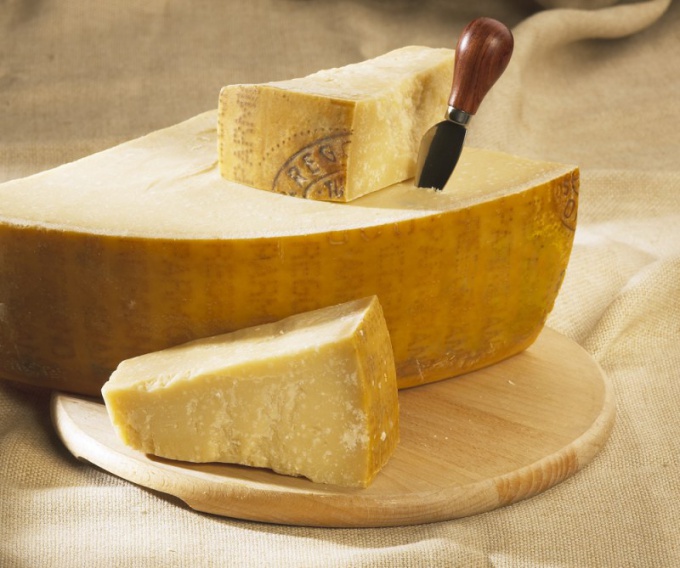Technology of production of Parmesan
The production of cheese each year begin on the same day - April 1. To create one head, the standard whose weight is about 40 kg, 550 liters of milk are required. The finished cheese is aged for a year in special casks, and then checked for quality. If the consistency turned out patchy, or the product is exposed to air, it is celebrated on a special stamp that allows it sell under a different name. Approved by the experts at the cheese stand another year or two, and then mark burnt mark and is marked by the inscription Parmigiano Reggiano.
Dishes, add the Parmesan
Breaking through the granular-scaly structure and original taste Parmesan cheese has long been added to many Italian dishes as a final touch. Most often they are sprinkled on pasta, risotto, polenta or pizza, and some meat or fish dishes, cooked in the oven. This cheese is famous for not leaving a melting lumps and becomes viscous.
Parmesan is also added to various salads, including Caesar, and even in some soups. In the homeland of this product, in the region of Emilia-Romagna, it is often used as a dessert in combination with walnuts, pears or grapes. Cheese is also frequently used as self-starters to wine.
Cheese substitute Parmesan
To replace a solid piece of Parmesan any other cheese is almost impossible, as knowing the taste of this product is sure to recognize a fake. But in the dishes, which recipe requires grated Parmesan, you can add another kind of cheese. So, for cooking lasagna, noodle casseroles, or pizza, where the cheese should melt, it is best to use the Lithuanian "Giygas" or "rokiškis", but will fit any Dutch cheese varieties. At worst you can use Russian cheese.
In salads, risotto or any other dishes that will certainly require finely sliced wafers of Parmesan, you can put Italian cheese "Grana Padano". The latter resembles the cheese a grainy texture and spicy taste with a slight nutty flavor, but it is a bit more salty. However, the taste difference between these two types will define only a true connoisseur of Italian cheeses.
Less similar with Parmesan cheese aged Swiss Gruyere with a nutty taste and spicy aroma. However, the color yellow, and the cooking technique is different. But in grated form or as thin plates it can also be used.
